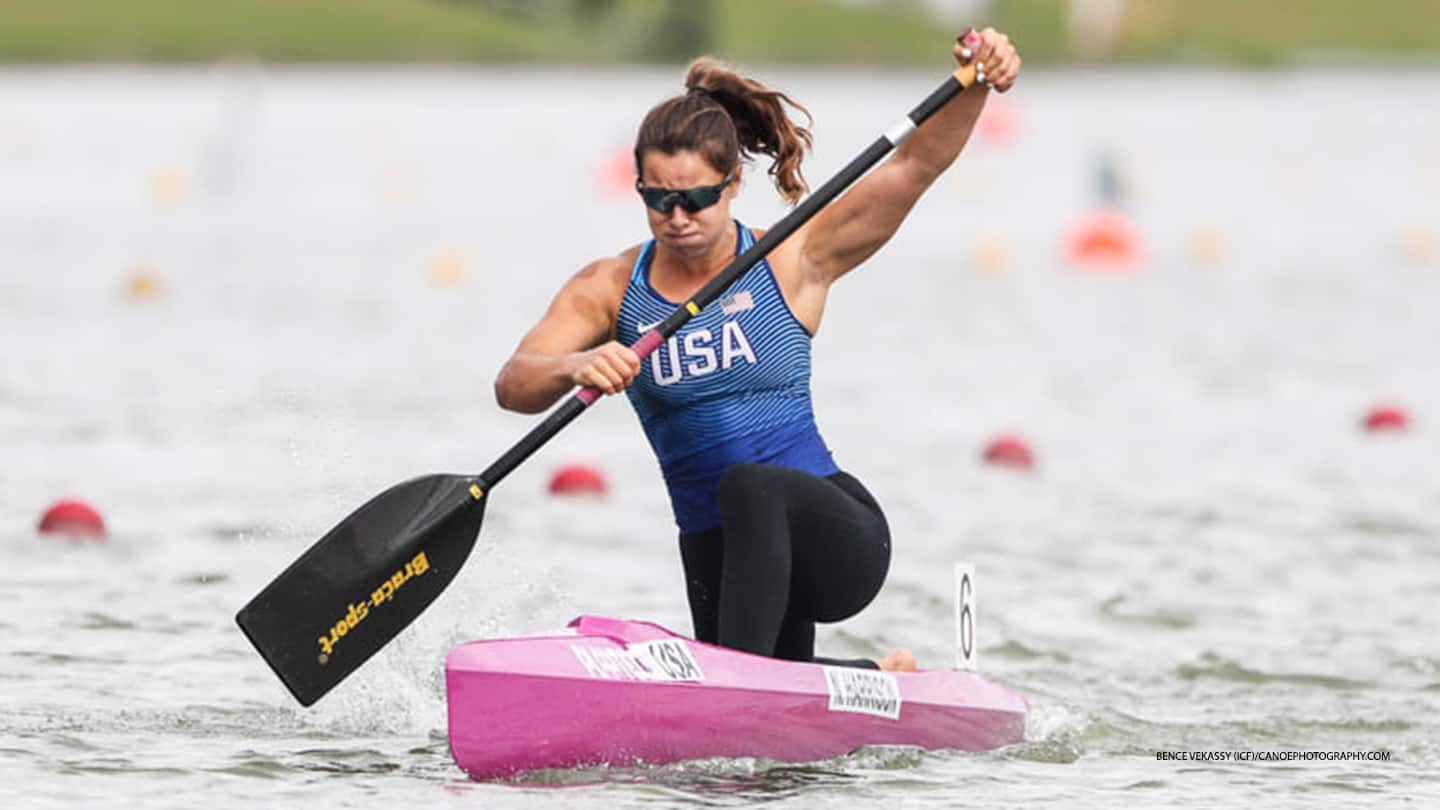
With Athletes Back On The Water Learn How To Watch Canoe Kayak Sprint Like An Expert
by Lisa Costantini

Nevin Harrison competes at the 2020 ICF Canoe Sprint World Cup in Sept. 2020 in Szeged, Hungary.
When it comes to Olympic sports, canoe and kayak is one you can bet a lot of people have tried at some point in their lifetime. While fairly similar: in a canoe the paddler kneels and uses a single-bladed paddle to propel the boat forward; and in a kayak the paddler is seated and uses a double-bladed paddle on alternate sides of the boat.
But in both, the rules of competitive racing are easy: first one to cross the finish line wins.
And now that women’s canoe is making its Olympic debut at the Olympic Games Tokyo 2020, we wanted to help people take their knowledge from pastime to professional. Here are 5 things to watch for at the ACA Sprint Olympic & National Team Trials in Sarasota, Florida this weekend.
The goal of canoe and kayak sprint is to get across the finish line first. But the start is a good indicator of who is going to accomplish that, revealed Zsolt Szadovszki of Hungary — who is the coach of Team USA’s current female sprint canoe world champion Nevin Harrison and national team coach.
“The start can be a predictor of who will win the race,” Szadovszki said. And he should know, as the two-time silver medalist in sprint kayak at the 1998 World Championships.
National team canoe sprinter and marathoner Stanton Collins elaborated: “In the 200m, the start is definitely important,” he said. “You really just want to see who makes it to the 50m mark the fastest.”
But for the longer races, he explained why the tell is different. “In the 500m and 1000m you want to start fast without spending too much energy. For those races, the people to watch are the ones near the front who still look relaxed.”
When you’re watching a boat sprinting across the water, it’s hard to watch anything but the athlete doing all the work. But Collins revealed how if you keep your eyes on the splash, it could be a clue as to how the race is going.
“The amount of splash is the combination of the individual’s technique and their power,” he said. But that technique could be an inefficient stroke if they are leaving the paddle in the water too long.
According to Szadovszki, if an athlete drags their paddle at the end of the stroke, that would cause more splash and slow the boat down. So canoeists use a technical cue that helps them pull their paddle from the water at precisely the right moment. If you watch, it’s where their “hips meet the paddle,” which results in the athlete pulling the paddle from the water once it’s lined up with their hips. This ensures that they exit their paddles early, avoiding the drag that slows the boat.
Many times in races it can appear as if the athletes are all moving in sync. But what should set them apart is their stroke. “Always watch for the person who can move the quickest with the most relaxed stroke,” Collins said. “This will indicate who can maintain the stroke the longest.”
Check to see if “the boat is gliding farther between strokes.” That is a good indication that the paddler is paddling efficiently.
Something else that should appear relaxed is their body. “Their body should not be hinging back and forth between strokes, and instead remain consistent in stature,” explained Szadovszki.
Collins said to look for someone who is close to the front of the pack but relaxed, as they could move to the front before the finish.
Athletes who race boats for a living usually get judged by the size of their arms. But in fact, Szadovszki revealed, “both arms and legs are incredibly important in the canoe and kayak.” But it’s actually the legs that “become more of a differentiating factor on the elite level.”
Collins shared that while you “do need your whole body to paddle fastest,” it is similar to rowing where more than 50% of the power comes from the legs alone — with the arms and core making up the rest.
“Canoers need an equally strong lower body, but kayakers will have a stronger core and upper body than lower body,” he said.
“The finish line is the only line that really matters!” Collins exclaimed. But what should fans keep an eye out for in those final meters?
“There are many factors that can indicate a strong finish: increased stroke rate, boats overtaking one another, and increased boat speed. At the end of a race, though, the average speed of an athlete tends to drop off, so it's often more about who can maintain pace rather than let their speed drop off,” Szadovszki said.
With longer races — like the 500m and 1000m — “the outcome largely comes down to the finish.”